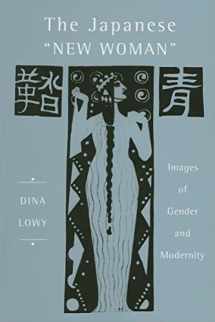
The Japanese 'New Woman': Images of Gender and Modernity
ISBN-13:
9780813540467
ISBN-10:
0813540461
Edition:
None
Author:
Dina Lowy
Publication date:
2007
Publisher:
Rutgers University Press
Format:
Paperback
190 pages
Category:
Japan
,
Asian History
,
Women in History
,
World History
,
Social Sciences
,
Feminist Theory
,
Women's Studies
FREE US shipping
Book details
ISBN-13:
9780813540467
ISBN-10:
0813540461
Edition:
None
Author:
Dina Lowy
Publication date:
2007
Publisher:
Rutgers University Press
Format:
Paperback
190 pages
Category:
Japan
,
Asian History
,
Women in History
,
World History
,
Social Sciences
,
Feminist Theory
,
Women's Studies
Summary
The Japanese 'New Woman': Images of Gender and Modernity (ISBN-13: 9780813540467 and ISBN-10: 0813540461), written by authors
Dina Lowy, was published by Rutgers University Press in 2007.
With an overall rating of 3.7 stars, it's a notable title among other
Japan
(Asian History, Women in History, World History, Social Sciences, Feminist Theory, Women's Studies) books. You can easily purchase or rent The Japanese 'New Woman': Images of Gender and Modernity (Paperback) from BooksRun,
along with many other new and used
Japan
books
and textbooks.
And, if you're looking to sell your copy, our current buyback offer is $0.3.
Description
The dawn of the twentieth century in Japan witnessed the rise of a peculiar problem: the “Woman Problem.” This, at least, was the term used in an ongoing debate among the government and various intellectuals over how to define gender roles. While the government worked hard to promote the “good wife, wise mother” paradigm, certain female members of society had other notions about how to engage with their world.In The Japanese “New Woman,” Dina Lowy focuses on this new female image as it was revealed, discussed, and debated in popular newspapers and magazines in the 1910s, as well as on the lives of a specific group of women—members of the feminist literary organization known as the Seitosha. These women drew on a variety of sources, including Zen training, Western writings and ideas, and Japanese morals and arts as they tried to open up new spaces for female activity beyond the confines of the home. Lowy shows how the Seitosha set a precedent that would be emulated in the decades to follow as Japanese women continued to question the patriarchal order, experiment with alternative visions, and pursue their rights in a variety of forms. This work also provides a context for comparative studies of New Women, gender debates, and the modernizing process.


We would LOVE it if you could help us and other readers by reviewing the book
Book review

Congratulations! We have received your book review.
{user}
{createdAt}
by {truncated_author}


